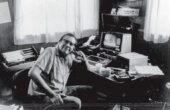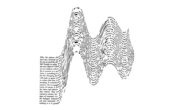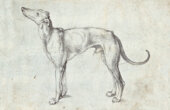When Aldous Huxley Opened the Doors of Perception
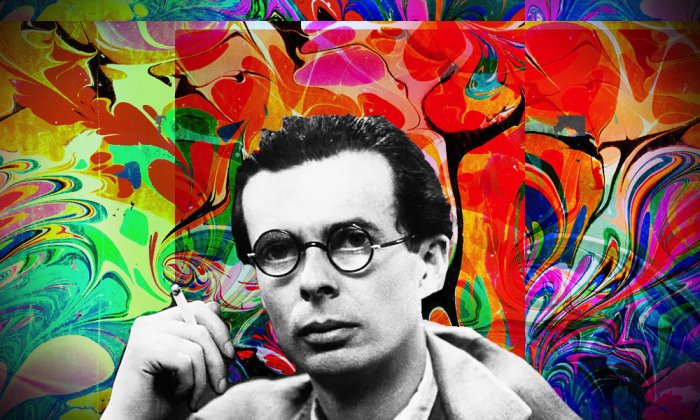
“To be shaken out of the ruts of ordinary perception, to be shown for a few timeless hours, the outer and inner world, not as they appear to an animal obsessed with survival or to a human being obsessed with words and notions, but as they are apprehended directly and unconditionally by Mind at Large—this is an experience of inestimable value to everyone and especially to the intellectual.”
These words, from Aldous Huxley’s seminal book “The Doors of Perception,” signaled a crucial turn in the popular perception of hallucinogenic drugs and the direction of hallucinogenic drug research.
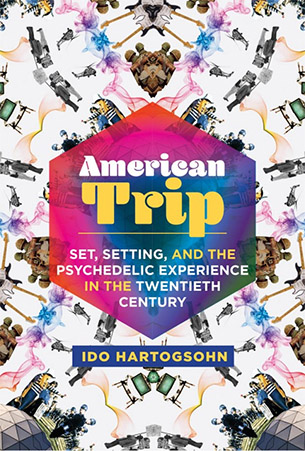
It is hard to imagine a sharper departure from the psychotomimetic paradigm than that espoused by Huxley in his book. Whereas previous research referred to the hallucinogenic phenomena as “distortions” and “disorders,” Huxley extolled the perceptual alterations of mescaline, declaring, “This is how one ought to see, how things really are.” While researchers noted the incoherent ramblings of patients undergoing LSD treatment, Huxley used hallucinogenic drug experiences as the basis for an articulate philosophical exploration, drawing inspiration from Meister Eckhart, the Buddha, Plato, Aquinas, Whitman, and Henri Bergson. In his view, psychedelics were not simply experimental tools that could be used to artificially induce a demented mind; Huxley recognized hallucinogens’ potential as tools for achieving a spiritual and philosophical experience of insurmountable value, not only for psychiatrists but also for artists, intellectuals, mystics, and anyone interested in exploring the secrets of existence.
A distinguished author and intellectual who gained international fame following the publication of his novel “Brave New World,” Huxley’s immense enthusiasm for the intellectual and spiritual implications of hallucinogenic drugs would prove formative for the generation of psychedelic drug enthusiasts that subsequently changed the face of American society.
While researchers noted the incoherent ramblings of patients undergoing LSD treatment, Huxley used hallucinogenic drug experiences as the basis for an articulate philosophical exploration.
Relevantly, one might surmise that it was a difference in set and setting that was responsible for Huxley’s new and highly divergent interpretation of hallucinogenic effects. Huxley, after all, had been an aspiring mystic for much of his life. He had cultivated a steady interest in Vedanta Hinduism since the end of the 1930s; his 1945 book “The Perennial Philosophy,” a comparative study of mystical traditions, argued for the universal compatibility of all spiritual systems. Huxley’s unique perspective certainly contributed to the development of his perennial interpretation of the effects of psychedelics, which not only enlisted the teachings of mystics from various traditions but also interpreted the drugs as revealing a perennial type of knowledge, which he termed a “Mind-at-Large.” In addition, Huxley’s profound interest in Eastern religions led him to his invocation of Eastern concepts and ideas as avenues through which one might explore and understand the effects of psychedelics, a thesis that had a profound impact on the subsequent exegesis of psychedelia. In sum, Huxley’s religious interests placed him in the unique position of shifting the discourse by being one of the first Western thinkers to point to the potential religious importance of hallucinogens.
An additional factor that contributed to Huxley’s unique set was his long-standing interest in mind-transforming substances, which ran all the way back to his early writing. By 1931, the English author had already published an essay, “Wanted, a New Pleasure,” in which he lamented humankind’s scant advancements in fashioning new forms of pleasure over the course of the past millennia. “So far as I can see, the only possible new pleasure would be one derived from the invention of a new drug,” he asserted at the time. For Huxley, mind-altering drugs harbored a promise to quench a deep running thirst of human existence:
If we could sniff or swallow something that would, for five or six hours each day, abolish our solitude as individuals, atone us with our fellows in a glowing exaltation of affection and make life in all its aspects seem not only worth living, but divinely beautiful and significant, and if this heavenly world transfiguring drug were of such a kind that we could wake up the next morning with a clear head and an undamaged constitution—then, it seems to me, all our problems (and not merely the one small problem of discovering a novel pleasure) would be wholly solved and earth would become paradise.
Read with the benefit of hindsight, these daring utopian propositions present us with an exceptionally prescient description of the 1960s psychedelic ideology epitomized in DuPont’s company slogan, “Better living through chemistry” — adopted and appropriated by the flower children some 30 years after it was first coined. It was a seed that gave birth to a whole branch of utopian psychedelic thought.
Huxley’s fascination with the threat and promise of consciousness-altering chemicals constitutes a thread that runs through his writing. “Brave New World” features the fictional drug Soma, described in the novel as the perfect escapist drug. Huxley’s Soma functions as a foremost agent for social engineering, a tool for the repression of the deeper longings and higher aspirations found in man’s soul. This theme of psychochemical social engineering was further developed in Huxley’s 1936 essay “Propaganda and Pharmacology,” which envisioned a future society subjected to a state of complacent hypnosis by the mass employment of powerful mind-control drugs. By contrast, Huxley’s final work, the 1962 utopian novel “Island,” features another fictional drug, evidently inspired by Huxley’s involvement with psychedelics. This drug, Moksha, could be seen as the mirror image of Soma: a fantastic agent for spiritual liberation that provides a full-blown mystical experience and stands at the foundation of the utopian society described in the novel.
In May 1953, psychiatrist Humphry Osmond spent a few days at the Huxley residence in Los Angeles with the author and his wife. Huxley, who was fascinated by the accounts of hallucinogenic drugs and their peculiar effects, had implored Osmond to allow him to experience these effects firsthand. Osmond was reluctant at first, worried that he might become infamous as the person who rendered the famous novelist insane. However, he eventually consented, and on May 4, 1953, Huxley had his first experience with mescaline.
The experience exceeded his wildest expectations. Huxley called it “without question the most extraordinary and significant experience this side of the beatific vision.” Gazing on the flower arrangement in the room, he felt that he was “seeing what Adam had seen on the morning of his creation — the miracle, moment by moment, of naked existence.” The visual effects of the mescaline, previously labeled as “distortions,” turned Huxley’s mind to classical art. Looking at a chair and then examining Van Gogh’s painting of a chair, he could not help but think that “the chair Van Gogh had seen was obviously the same in essence as the chair I had seen”; the folds and creases in his trousers, suddenly spectacularly detailed, seemed straight from a painting by Botticelli. He described his experiences with unbridled elation, using mystical concepts such as “the Godhead” and “the beatific vision,” and depicted a world in which mescaline and similar drugs would be used for intellectual and spiritual education. For Huxley, mescaline and drugs like it represented potential educational tools that could make it “possible for young people to ‘taste and see’ what they have learned about at second hand, or directly but at a lower level of intensity, in the writings of the religious or the works of poets, painters and musicians.” Going back to his 1931 concept of a new drug that could salvage humanity, he wrote:
What is needed is a new drug which will relieve and console our suffering species without doing more harm in the long run than it does good in the short. Such a drug must be potent in minute doses and synthesizable. If it does not possess these qualities, its production, like that of wine, beer, spirits or tobacco will interfere with the raising of indispensable food and fibers. It must be less toxic than opium or cocaine, less likely to produce undesirable social consequences than alcohol or barbiturates, less inimical to heart and lungs than the tars and nicotine of cigarettes. And on the positive side, it should produce changes in consciousness more interesting, more intrinsically valuable than mere sedation or dreaminess, delusions of omnipotence or release from inhibitions. To most people, mescaline is almost completely innocuous. Unlike alcohol, it does not drive the taker into a kind of uninhibited action which results in brawls, crimes of violence and traffic accidents.
Mescaline was “not yet the ideal drug.” Huxley noted that “along with the happily transfigured majority of mescaline takers there is a minority that finds in the drug only hell or purgatory.” However, he was confident that modern chemistry and physiology were capable of achieving practically anything “if the psychologists and sociologists will define the idea.”
Huxley’s “Doors of Perception” evoked a gamut of responses: some hostile, some sympathetic, some clearly bewildered. Several magazine writers noted that Huxley’s radical ideas could easily be rejected as the fantasies of a “misguided crackpot” had they been presented by anyone other than the respected English author. Some magazines celebrated Huxley’s proposition for a superior drug that could replace alcohol; others worried that the author’s ruminations might inadvertently encourage undisciplined hordes of youths to experiment with drugs. Authors were notably disturbed by Huxley’s association of the mescaline experience with Christian theology and mysticism. Stephen Siff, who has conducted an exhaustive review of media reactions to Huxley’s essay, notes that “Time” magazine went as far as to skip the parts of Huxley’s text that it considered potentially offensive to readers because of their Christian content. Particularly instructive was the response from some Central European intellectuals, who were quick to point out some of the ethical and cultural concerns that would resurface repeatedly in future discussions on psychedelics. German intellectual Thomas Mann described the book as a new and particularly “scandalous” stage of “Huxley’s escapism,” arguing that Huxley’s sympathetic treatment of experimentation with hallucinogens amounted to “an encouragement to the youth of America to engage in ‘doping,’ which they do not at all need.” Another scathing critique came from Swiss psychoanalyst Carl Gustav Jung.
Huxley’s “Doors of Perception” evoked a gamut of responses: some hostile, some sympathetic, some clearly bewildered.
In an April 1954 letter to Dominican priest Victor Francis White, Jung opined that “there is no point in wishing to know more of the collective unconscious than one gets through dreams and intuitions.” The renowned psychiatrist acknowledged the interest of mescaline, yet he was suspicious of experiencing it himself for fear of doing so out of “idle curiosity.” “I should hate the thought that I had touched on the sphere where the paint is made that colours the world, where the light is created that makes shine the splendour of the dawn, the lines and shapes of all form, the sound that fills the orbit, the thought that illuminates the darkness of the void,” he stated. In Jung’s response, one can identify an often subterranean but nevertheless recurring notion in the LSD debate, one that frames the drug’s ability to elicit spiritual experiences as an artificial — and therefore immoral — shortcut, defying celestial mandates. “I am profoundly mistrustful of the ‘pure gifts of the Gods.’ You pay very dearly for them,” Jung warned, enlisting Virgil’s “Aeneid” to his side: “(Men of Troy, beware the horse!) Whatever it is, I fear the Greeks, even bearing gifts.” As for Huxley, he was described by Jung as a “Zauberlehrling,” a sorcerer’s apprentice who has learned how to call on ghosts but does not possess the knowledge needed to control them. It would be rash to proceed any further, the psychiatrist argued, before fully understanding the unconscious.
Though seldom fully articulated, Jung’s negative estimation of Huxley’s new pursuit was characteristic of many others’ opinions voiced on both sides of the Atlantic. The English author had become a suspicious eccentric in the eyes of many, a situation that he lamented with great bafflement and bitterness. However, as the years progressed, Huxley’s views proved to be highly influential with a new generation of hallucinogenic drug researchers, as well as with the nascent psychedelics movement.
Ido Hartogsohn is Assistant Professor in the Graduate Program in Science, Technology, and Society at Bar Ilan University. He is the author of “American Trip,” from which this article is excerpted.
